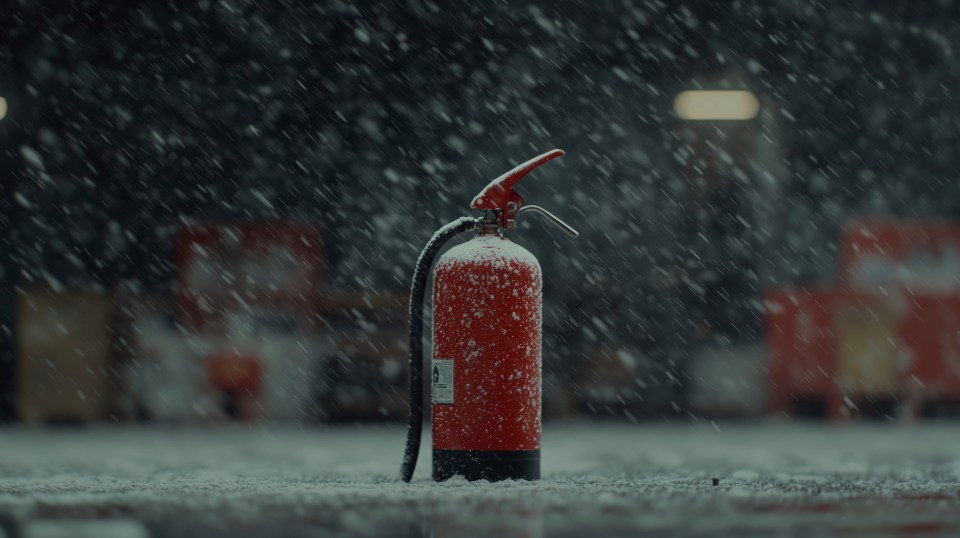In regions with harsh winters, questions often arise about the viability and safety of keeping fire safety equipment outdoors. One of the most common concerns is: can fire extinguishers be stored outside in freezing temperatures without compromising performance or compliance? Understanding the science behind extinguisher design, the tradeoffs in storage methods, and the relevant safety standards is essential for making an informed decision.

The Science Behind Extinguisher Performance
Fire extinguishers function based on pressure, chemical reaction, and rapid deployment. In freezing conditions, each of these performance factors can be negatively impacted, depending on the type of extinguisher.
- Water-based extinguishers (such as water mist or foam) are particularly vulnerable because water freezes at 32°F (0°C). This can cause internal damage or render the unit inoperable.
- Carbon dioxide (CO2) extinguishers are susceptible to pressure drop in cold environments, affecting discharge effectiveness.
- Dry chemical extinguishers are generally more resilient to cold, but their metal parts can still contract and crack, and seals may degrade over time.
These scientific realities show that storing fire extinguishers in freezing temperatures introduces a range of risks that depend heavily on the type of extinguisher.
Tradeoffs in Outdoor Storage
There are real-world scenarios where outdoor fire extinguisher access is essential, such as at construction sites, fuel depots, or large outdoor event spaces. However, storing fire extinguishers outside during winter months involves a delicate balance between accessibility and longevity.
- Accessibility vs. Protection: While outdoor placement improves emergency access, it exposes the unit to extreme conditions that can reduce effectiveness.
- Durability vs. Cost: Weatherproof storage solutions like heated cabinets or insulated enclosures offer better protection but add cost and complexity.
- Maintenance vs. Risk: Outdoor units demand more frequent inspections to prevent failures, requiring time and labor resources.
Each decision must account for these tradeoffs while aligning with safety regulations and operational needs.
What the Experts Say: OSHA and NFPA
According to the Occupational Safety and Health Administration (OSHA), fire extinguishers must be maintained in a fully charged and operable condition and should be easily accessible in case of emergency. This does not explicitly prohibit outdoor storage, but implies that environmental protection is a must.
The National Fire Protection Association (NFPA) 10 provides additional clarity. NFPA emphasizes that extinguishers must be protected from temperatures that could make them inoperable, and manufacturers’ storage guidelines should always be followed. For freezing climates, this means only using extinguishers rated for sub-zero temperatures and placing them in temperature-controlled or insulated enclosures.
Best Practices for Storing Fire Extinguishers Outdoors in Cold Climates
To overcome the risks associated with storing fire extinguishers in freezing conditions, consider the following best practices:
- Use Cold-Rated Extinguishers: Some models are specifically designed to function in sub-freezing temperatures. Confirm that the extinguisher’s operating range is compatible with your climate.
- Install Heated or Insulated Cabinets: These protect units from direct exposure to snow, ice, and frigid air while maintaining a usable temperature.
- Conduct More Frequent Inspections: Check pressure levels, seals, and physical condition more regularly than the standard monthly visual check.
- Keep Records of Environmental Conditions: Document outdoor temperatures and inspection findings to build a data-driven maintenance program.
- Consult Manufacturer Guidelines: Always adhere to product-specific recommendations on temperature tolerance and storage requirements.
These solutions help you remain compliant while maintaining readiness.
Industry Use Cases and Limitations
Outdoor fire extinguishers in cold climates are widely used in industries such as:
- Oil and gas fields
- Remote mining operations
- Transportation depots
- Outdoor construction projects
In such environments, completely avoiding outdoor storage is unrealistic. However, following stringent protocols can significantly reduce risk and improve reliability.
To explore further, read this detailed guide on outdoor fire extinguishers, which outlines practical applications and real-world safety considerations.
Conclusion: Practical but Risky Without Safeguards
So, can fire extinguishers be stored outside in freezing temperatures? The answer is yes—but only with careful planning, proper equipment, and strict adherence to safety protocols. Balancing accessibility with preservation is the key.
Failure to consider environmental impact and regulatory compliance can result in unusable equipment when it’s needed most. Therefore, incorporating preventive solutions, regular maintenance, and professional consultation ensures that even outdoor units in freezing climates remain reliable and compliant.
Understanding these variables equips facility managers, safety personnel, and business owners with the knowledge they need to protect both people and property during the most challenging weather conditions.
For comprehensive recommendations on storing fire extinguishers, be sure to review the full guidance from Industrial Fire Protection here.
comments +